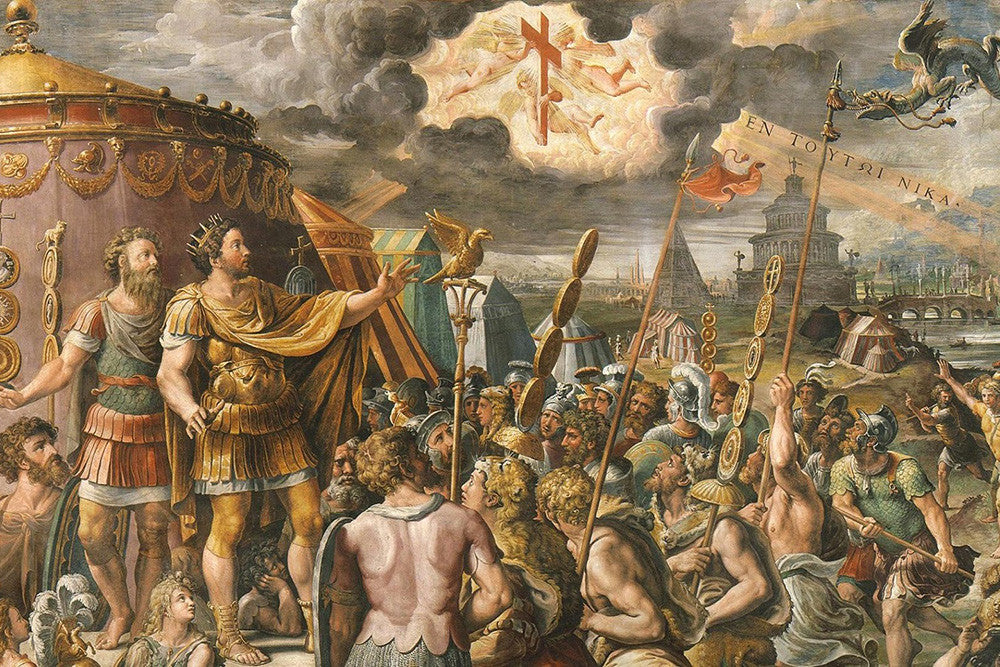The persecution of Christians began during the reign of Emperor Nero (who ruled from 54 to 68 AD). Nero needed to blame someone for the fire that destroyed much of Rome in 64 AD.
The accounts of Christians being thrown to wild animals or burned alive are a terrible truth. One of Nero's tortures was to dip Christians in pitch and use their bodies as torches to light the imperial gardens during festivals.
Christians were persecuted and frequently martyred until the time of Constantine the Great, who issued the Edict of Milan in 313 AD, ending the persecution.
The conversion
Legend has it that before an important battle, a cross of fire appeared in the sky with a message: "With this sign you will conquer." Grateful for the victory achieved in that battle, Constantine converted to the new religion and repealed the cruel decrees against Christians.
However, the growing number of attacks by barbarians forced Constantine the Great to move the capital from Rome to Byzantium, which he renamed Constantinople (today Istanbul). This resulted in the division of the Roman world into two parts.
The eastern part was administered from Constantinople, while the western part was ruled by a deputy emperor residing in Italy. Thus, the last emperor to rule over a unified Roman nation was Theodosius I (379-395). Upon his death, the empire was divided between his two sons, Honorius, who reigned independently over the Western Empire, and the eldest, Arcadius, who became the first Byzantine emperor. Coins from both empires
The Western Empire lasted less than a century from that moment. But the Eastern or Byzantine Empire lasted for more than a thousand years, until it was conquered by the Turks in 1453. The years of greatest splendor were those of Justinian I (527-565).
When Islam was born from the inspiration of Muhammad in the 7th century and began to gain power, it started waging war on the borders of Byzantium, and in the 15th century it finally breached the walls of the capital and conquered it.
The Byzantines minted coins of gold, electrum (an alloy of gold and silver), silver, billon (an alloy of silver and a base metal), and bronze. Silver coins were the most widely circulated in the Western Empire, but gold and bronze coins formed the basis of the Eastern monetary system.

